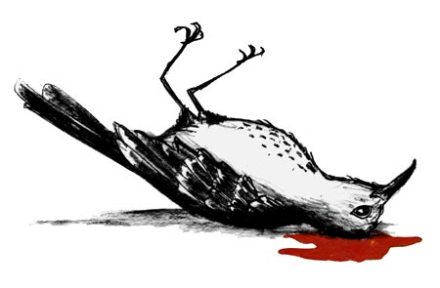“When we are children we seldom think of the future. This innocence leaves us free to enjoy ourselves as few adults can. The day we fret about the future is the day we leave our childhood behind.”
― Patrick Rothfuss, The Name of the Wind
Award winning author Harper Lee wrote the classic To Kill a Mockingbird. This Southern Gothic, coming-of-age novel is written, partly, from experience of the author. Lee lived Monroeville Alabama, youngest of five children of Amasa Coleman Lee and Frances Cunningham Finch. Her mother was a homemaker; her father, a practiced law and served Alabama State Legislature. As a child, Harper Lee was a tomboy, and a developed reader. The similarities between the story and the basic facts about Lee’s childhood are undeniable, and I believe this not to be by coincidence.
The novel is set up in a sleepy town in South Alabama. Harper Lee narrates us the life of a white child in the South. The narrator is a six year-old girl named Jean Louise, otherwise known as Scout. Her brother Jeremy (nicknamed Jem) and her father Atticus Finch are the Finches. They are a well-respected family and are expected to act as one. Scout, however, refuses to be a lady and wear dresses and instead engages in adventures with Jem and Dill (a new character). The three of them spend their summers in the Finches residence’s backyard playing games.
Being in such a small town makes the fastest gossip and rumors spread. The Radley Place was always object of these rumors because it didn’t fit the standards the town considered normal. The children are aware of this, and there was one person that confuses and excites them. “Boo” Radley from the Radley Place is victim of their curiosity and their enterprise in finding how he looks and why he doesn’t come out.
Another sub-plot is added to the story. The trial of a black man (Tom Robinson) accused of raping a white girl is appointed to Atticus to defend the black man. We see how Scout and Jem are finally forced into seeing the reality of thing in the 1930’s. Unfair trials and illegal lynching formed part of those cases in the South.
As the days pass, Scout becomes more aware of her surroundings and her incredible perception helps her understand the everyday problems. Scout and Jem continue with they’re adventures even during school time (without wanting to). In a particular scene from the book, Atticus tells the children: “Shoot all the bluejays you want, if you can hit ’em, but remember it’s a sin to kill a mockingbird.” Scout reflection of this statement leads her to believe that maybe Atticus wasn’t really talking only about birds. Jem realizes that Maycomb County isn’t as perfect as he imagined and Scout begins to understand how judgmental people in general are.
Scout’s way of describing things and her thinking process is amazing and unbelievable for a six year-old. Her innocence and intelligence makes her my favorite character from the story. She can be very perceptive, and at times she can be taken as “rude”. This is what I love about Scout, her naivety and cleverness makes her a lovable character that many people can relate to.
This novel about innocence, hypocresy and cruelty is intended for people of all ages. Harper Lee wrote the story with innocence proper from a child makes it perfect for young-adults or older. This book is a non-fiction story with no supernatural elements. This does not make the story less good, as the protagonist adventures are enough to leave the reader wanting more. I strongly recommend children and adults of all ages to read it, it is truly a wonderful novel to read.

